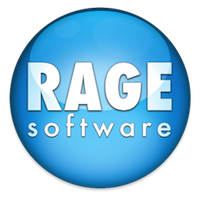PayPal Widget Features You May Have Missed…
January 22nd, 2020The PayPal widget is one of EverWeb’s most popular and versatile widgets having debuted in EverWeb 1.3. It is also a widget that is frequently updated with almost every point release of the product.
In this review of the PayPal widget, we are going to take a look at the major new features that have been introduced to it from EverWeb 2.8 onwards. Some of these additions to the widget help you work more efficiently than in previous EverWeb versions. Other features have been added or enhanced, as they have been popular requests coming from you, the user community!
Let’s begin with the introduction of Responsive Website Design in EverWeb 2.8 and how to use the PayPal widget in responsive websites.
PayPal Widget and Responsive Website Design
The introduction of responsive web design to EverWeb led to a host of responsive tools and widgets that blended in seamlessly to the existing product .
Whilst many of EverWeb’s existing widgets were optimized to work natively within either a fixed width and/or a responsive page, some widgets such as the PayPal widget function best as a fixed width only widget.
To be able to add the fixed width PayPal widget to a responsive page design, you first need to add a Responsive Row widget to your page. Once you have done this you can then drag and drop the PayPal widget on to the page on top of the Responsive Row widget that you have just added. The Responsive Row widget allows fixed width objects such as the PayPal, FaceBook Like, FaceBook Page Timeline and Live Photo widgets to operate properly as fixed width objects within a Responsive page environment.
We also created a handy YouTube video about using the PayPal Widget in a Responsive page which will give you hints and tips on how to get the best out of the PayPal widget in a responsive page.
Product Info Section
EverWeb 2.8 also introduced a new section to the PayPal widget, the Product Info section. In this section, you can select a Product Image and/or a Product Description. This is a great feature as before EverWeb 2.8 you had to add the product image and text description manually. Now it is all incorporated in the widget.
If you have updated your version of EverWeb to 2.8 or later, this is one area where you might want to update the pages in your site that use product images and/or product descriptions. It is much easier to replace manually places images and text by using the new Product Info section in the PayPal widget instead.
Styled Customizable Pay Button
EverWeb 3.0 introduced a new Styled Customizable Pay Button to the PayPal widget. The new options allow you to set the text that you want on the custom pay button, and apply styling effects such as background color, text color, button border radius (which will make the button’s corners square, or rounded) and mouseover text and background colors. Additionally you can also set the Text font and size using the Fonts button options.
Shipping and Handling Options
When EverWeb 3.1 debuted, the PayPal widget gained a couple of requested Shipping and Handling features. The first option now looks you to apply a shipping discount when customers order more than one product.
The new Handling option allows you to apply a handling fee to customer orders. The option applies a flat fee to the whole order.
Updated Styled Text Editor
The Styled Text Editor was introduced in EverWeb 2.8 to the PayPal widget as well as the FlexBox and Text Section widgets. Since its introduction the Styled Text Editor has been updated for all widgets it is used in. This means bullet and numbered lists, a remove text formatting option, and a full screen editor window which is very useful if you have a lot of text in your description. The font list has also been optimized to be faster when being loaded for the first time.
Updated PayPal Widget User Interface
The growth in options and complexity in the PayPal widget has meant that some reorganisation of the widget’s features was necessary. You should find it easier to identify the section of the widget that you want to use, and there are also more helpful text descriptions than previously.
All in all, the PayPal widget goes from strength to strength, adding new features and refining existing ones to create the best experience without having to delve in to PayPal itself to find what you need.
If you have a question about this post, please let us know as we are always happy to help!
EverWeb on Social Media
You can also find EverWeb on the following social media platforms:
